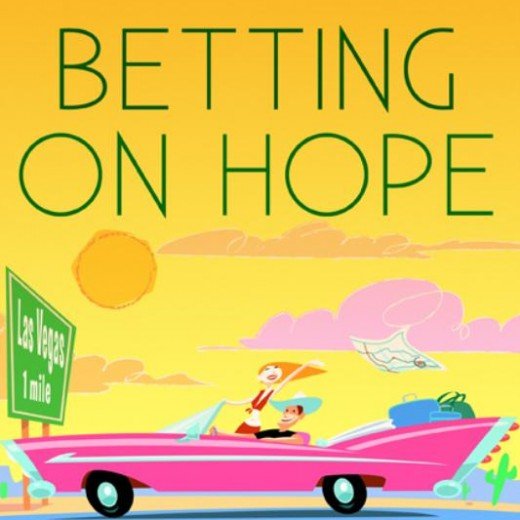Say It with Subplots by Kay Keppler
 Let’s welcome back monthly columnist, editor, and novelist, Kay Keppler, as she shares with us “Say It with Subplots.” Enjoy!
Let’s welcome back monthly columnist, editor, and novelist, Kay Keppler, as she shares with us “Say It with Subplots.” Enjoy!
***
When someone asks you what your story is about, you tell them the actions and conflict of your protagonist. You don’t discuss your subplots because they’re minor. They’re there to support your main story, rather than be the main story.
But subplots can be tricky to get right. If you’re having trouble with a sagging middle or getting your loose ends tied up, sometimes it’s because your subplots went south. What should you watch out for?
It’s filler
Maybe your subplot has no real narrative purpose. It doesn’t advance your central plot, support your theme, or develop character. It doesn’t go anywhere. After a while, your readers will wonder why. And they’ll start to skim. You don’t want that.
It’s boring
You don’t want your subplot to overwhelm your central story, but it does have to have a purpose, and it has to be engaging. Things have to happen to those secondary characters. Actions have consequences. Your readers have to care.
If you think subplots are killing your book, how can you make them more effective?
Escalate the drama
Use a subplot to make it harder for your protagonist to achieve her goal. Complicate events for her. Such complications can trigger evolution of the character, and that makes it critical to your story.
Demonstrate a need
See if you can develop a subplot that makes your protagonist question his goal, or even move from an external, ego-driven goal (something he wants, a selfish goal) to an internal, essence-driven goal (something he needs, an interior, selfless goal).
To demonstrate character growth, the goals of desire and need should be mutually exclusive. That is, if you hero achieves the goal he wants, he sacrifices the goal he needs (often a tragedy!). Conversely, by obtaining the goal he needs, he gives up the goal he wants. If your character opts for need, he proves that he has changed.
Since the “need” subplot is about fulfilment, it’s usually, but not always, about love. You can incorporate this subplot in several ways.
Introduce a love interest
Let’s say your guy Joe is a hard-driven racehorse trainer who wants to win the Kentucky Derby. On the track he meets the girl of his dreams, a jockey and the daughter of a competitor, who has a one-horse stable. On the day of the Derby, Joe learns that his sweetheart is riding against his horse. If she loses, she’ll lose not just the race, but her home and job and be forced to marry the rich owner. Joe’s dilemma: if he gets his want (winning the Derby), he loses his sweetheart (which denies him what he needs: true love).
Develop a love triangle
Consider the film Bridget Jones’s Diary, in which both the want and the need are potential romantic partners. Bridget’s want, her external desire, is the Hugh Grant, bad-boy character. He’s handsome, successful, witty, and charming. Who wouldn’t want that, right? Her need is the kinder, more substantial Colin Firth. Hugh Grant offers “fun”; Colin Firth offers fulfilment.
Whom to choose? Bridget overcomes her desire to have what she wants and realizes that she needs Colin Firth.
Strengthen a friendship
You can demonstrate character growth through friendship, too. Let’s say you’ve got two guys who were each raised in a military family that moved around a lot, so neither formed strong friendships as kids. They meet through the police academy, where Mac is in training to be a cop (Mac’s external need) and Bud raises police dogs.
When Mac’s instructor accuses Mac of murder, Bud stands by him. But rogue cops gang up on Bud, and Mac jumps into the fray, injuring several. This action jeopardizes his future as a cop, but he does it because his need—his love for his friend—has overcome his want to become a police officer.
Have a family
You’ve read the book or seen the movie: there’s a big, crazy family, and each wants different things. This story is rollicking fun, except that one family member isn’t doing that well. Let’s say the youngest daughter wants to join the boys’ baseball team because there isn’t a girls’ team. Against all odds, she makes the team.
Then the parents of the other players revolt, saying they’ll pull their sons from the team if the coach doesn’t remove her. But her family rallies around her, organizing feminist pep rallies and getting the school and other parents to support the kids team. By foregoing their own selfish goals, the family embraces their need through love and becomes whole again.
Manifest self-expression
One final subplot that forces growth on your character doesn’t involve love, but creativity. For example: an artist living in nineteenth-century Paris wants his paintings to be exhibited in that year’s official Salon, but the curators won’t accept his avant-garde Impressionist work. Should he paint in a style that doesn’t move him, just to get public notice? Or should he paint his passion?
Acceptance by the Royal Acadamie is his want. Artistic freedom is his need. If he submits the picture of his heart, he won’t be accepted. But he makes the hero’s choice and submits the Impressionist painting. He’s denied the exposure he wants, but he gets the fulfillment he needs.
The subplot you need
Everyone at least occasionally loses sight of what’s important. We think it’s about getting the prize, even though experience tells us that life’s greatest joys are internal rather than external. A transformative story reminds us of this eternal truth.
How do you achieve that transformative story? With a subplot that offers your protagonist what s/he needs, but requires the sacrifice of illusory wants.
***
ABOUT THE AUTHOR
Kay Keppler is an author Zero Gravity Outcasts, Betting on Hope, Gargoyle: Three Enchanting Romance Novellas, and editor of fiction and nonfiction –Angel’s Kiss and Outsource It!
is an author Zero Gravity Outcasts, Betting on Hope, Gargoyle: Three Enchanting Romance Novellas, and editor of fiction and nonfiction –Angel’s Kiss and Outsource It!
She lives in northern California. Contact her here at Writer’s Fun Zone in the comments below, or at kaykeppler@yahoo.com to ask questions, suggest topics, or if you prefer, complain.






